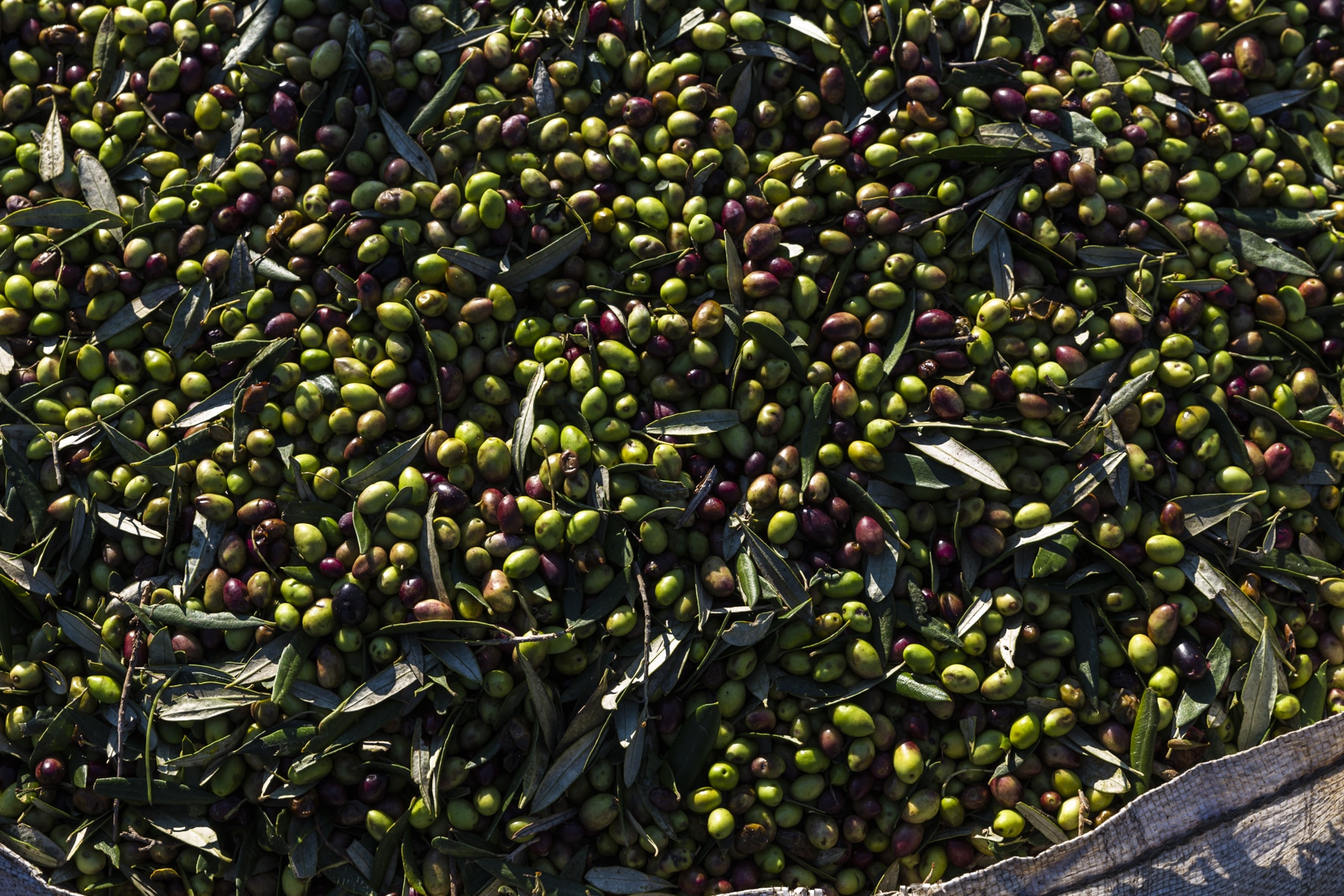Ideally, you should taste olive oil before purchasing it. This can be done at markets, where fresh products are sometimes offered for tasting. We regularly do this with our extra virgin olive oil at various locations across the country. However, this isn’t always possible. Therefore, we’ve listed the different labels below, hoping it helps you make the right choice in-store!
Extra Virgin Olive Oil
Looking for organic, plant-based, healthy, and the tastiest oil? Then there’s only one option: extra virgin olive oil. This is the top category, which Gkazas falls under. It’s olive oil from the first pressing (without heating) using mechanical presses. This results in the highest quality, as no chemical processes are involved. The acidity must not exceed 0.8 percent, and the truly good presses aim to stay below 0.5 percent. This results in a rich flavor and an olive oil where all natural vitamins and minerals are preserved.
Virgin Olive Oil
We move down from the top category. The non-‘extra’ variant is called virgin olive oil, primarily due to its slightly higher acidity. It can reach up to 2 percent. The goal is to keep the taste, color, and aroma as authentic as possible. However, this isn’t always achieved. The olives may be of lower quality or riper at pressing, making the oil more acidic. It’s clear that this (often cloudier) oil can’t match the flavor, aroma, and content of the extra virgin variant.
Refined Olive Oil
On paper, this is a qualitatively weaker form of olive oil. Cheaper and therefore significantly lower in quality. This is due to the refining of the oil during the first pressing. Refining means removing some ‘impurities’ from the oil, but this causes it to lose part of its taste and aroma. This refined oil is often blended with other first-press olive oils to give it some flavor and scent. Additionally, other oils like sunflower or soybean oil are often added. This is allowed as long as the acidity (the pH level) doesn’t exceed 2.5 percent. Often, it’s an industrial process involving multiple pressings, and the biological (the love for the product) starting point disappears. In short, we consider this olive oil a sacrilege.
Baking vs. Table Use
Then we have another tip. As Dutch people, we’re always looking for ways to save money. We always recommend extra virgin olive oil. But if you really want to save on your olive oil, use a cheaper oil for baking. Then apply the extra virgin olive oil in salads, with bread, and for other things where the oil should truly add flavor.
What to Look Out For?
In short, extra virgin olive oil is the best olive oil. It’s true that it’s more expensive than other variants and not always available in every supermarket. In fact, there are producers who are allowed to use this label, yet the oil is at most virgin. Something to do with regulations we won’t delve into here… Therefore, always check if the correct certifications are on it. In our case, these are the EKO certification and the European organic certification. With Gkazas Olive Oil, you’re always in good hands! Take a look at our webshop or our Facebook page, where you’ll see that Gkazas Olive Oil is available in many different forms and at many different locations.
Read also: Extra virgin olive oil: how healthy is it really?

















